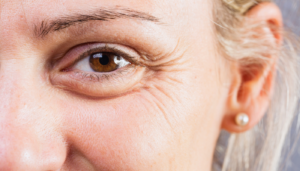What you should understand—and why it matters
Featuring insights from Dermatologist of the Dermapure Calgary Wildwood clinic, Dr. John Arlette.
May is Skin Cancer Awareness Month, a time dedicated to education, prevention, and early detection. As the most common form of cancer globally, skin cancer is both highly treatable and largely preventable, but awareness is key. Whether you’re diligent about sun protection or not quite sure what to look for, here are five important things everyone should know.
1. Skin Cancer Is More Common Than You Think
Skin cancer affects 1 in 5 Canadians in their lifetime. For Canadian women ages 15-29, Melanoma is the third most common kind of cancer. While it often develops in sun-exposed areas, it can appear anywhere on the body. Basal cell carcinoma (BCC) and squamous cell carcinoma (SCC) are the most common types and are usually slow growing. Melanoma, while less common, is more aggressive and can spread quickly if not detected early.
- Basal Cell Carcinoma (BCC): The most common form of skin cancer, BCC often appears as a pearly bump, pink patch, or sore that doesn’t heal. It grows slowly and rarely spreads, but can cause damage to surrounding tissue if left untreated.
- Squamous Cell Carcinoma (SCC): SCC typically shows up as a scaly, red patch, wart-like growth, or sore that crusts or bleeds. It can develop on sun-exposed areas and, if untreated, may spread to deeper layers or nearby lymph nodes.
- Melanoma: The most serious type of skin cancer, melanoma often looks like a new mole or a change in an existing one, with irregular borders, uneven color, or asymmetry. Early detection is critical, as melanoma can spread quickly if not treated promptly.
Why it matters:
Skin cancer doesn’t discriminate. It affects all ages and skin types, and early detection makes a critical difference in outcomes.
2. Not All Sun Damage Is Visible
Many people associate skin cancer risk with visible sunburns or extensive tanning, but the damage can be cumulative and invisible. Even brief, unprotected exposure adds up over time, leading to DNA damage in skin cells that can eventually result in cancer.
Why it matters:
UVA rays, which contribute to aging and long-term skin changes, penetrate deeply and are present year-round even on cloudy or cold days. That’s why daily, broad-spectrum sunscreen (SPF 30 or higher) isn’t optional.
What our expert, Dr. Arlette, is saying:
“The first part [of reducing your risk of skin cancer] is avoiding direct sun exposure, because the sun does not give you thirty seconds to get out the door before it starts to bite—it starts to bite as soon as you go out the door.”
3. Actinic Keratosis Is a Warning Sign
Often overlooked or mistaken for dry patches, Actinic Keratoses (AKs) are rough, scaly spots caused by long-term sun exposure. While they’re not cancerous, they’re considered precancerous, and some can develop into squamous cell carcinoma over time.
Why it matters:
AKs are one of the most common reasons people first seek dermatologic care. Treating them early, whether with cryotherapy, topical treatments, or light-based therapy, not only clears the skin but helps prevent progression to cancer.
4. You Should Know Your ABCDEs
When it comes to spotting potential melanoma, the ABCDE rule is an easy, life-saving guide:
- Asymmetry
- Border irregularity
- Colour variation
- Diameter greater than 6 mm
- Evolving shape, size, or colour
Why it matters:
Changes in moles or new spots should never be ignored. An annual skin check, especially if you have a history of sun exposure, fair skin, or a family history of skin cancer, is a proactive step toward early detection.
What our expert, Dr. Arlette, is saying:
“With most skin cancers, they don’t look normal—they look different than the rest of your skin.
So if it’s new, if it’s growing, and it looks funny, that’s a good thing to get checked by your doctor. It can be rough, it can be smooth—the big thing is if they bleed. So if a spot is there for more than three months, it’s time to get it checked.”
5. Prevention Is an Everyday Practice
Daily habits have long-term impact. Incorporate broad-spectrum sunscreen into your morning routine, wear protective clothing and hats, and avoid tanning beds entirely. For those who love active outdoor lifestyles, scheduling regular skin checks is just as important as your fitness goals.
Why it matters:
Skin cancer is largely preventable. A few small choices, made consistently, can dramatically reduce your risk.
What our expert, Dr. Arlette, is saying:
“Put your sunscreen on! [SPF] 30, 50—just put it on. That’s the biggest part. Do it every day. You’re going to reduce the amount of sun exposure you’re going to get. And then put on a hat, especially if you’re out. If you’re hiking, golfing, bicycling—all of those things are just areas where you get prolonged exposure to the sun.”
Take Charge of Your Skin Health
Dermapure clinics across Canada are proud to support education around skin cancer prevention and detection. Whether you’re seeking a skin check, have concerns about Actinic Keratoses, or want guidance on a personalized sun protection routine, our medical team is here to help.
Let’s make prevention part of your skincare plan, not just this month, but every day.






